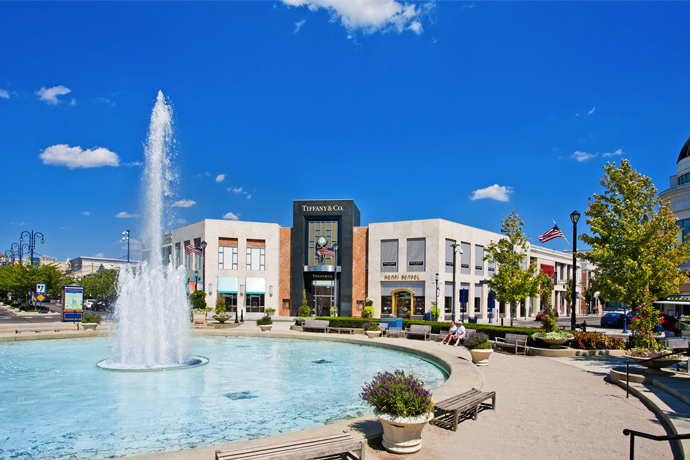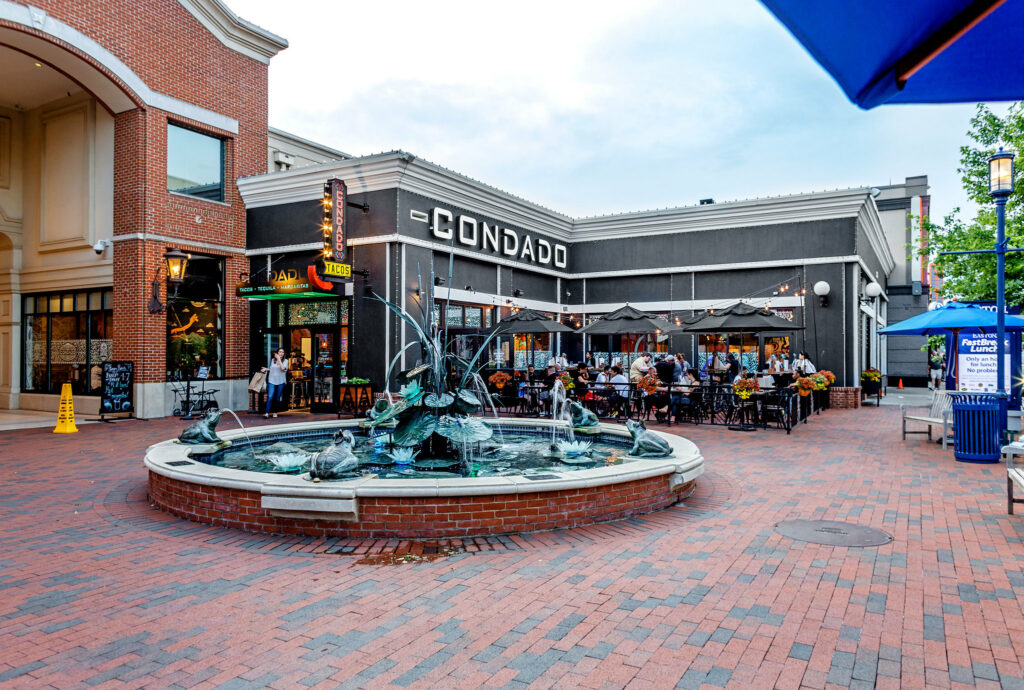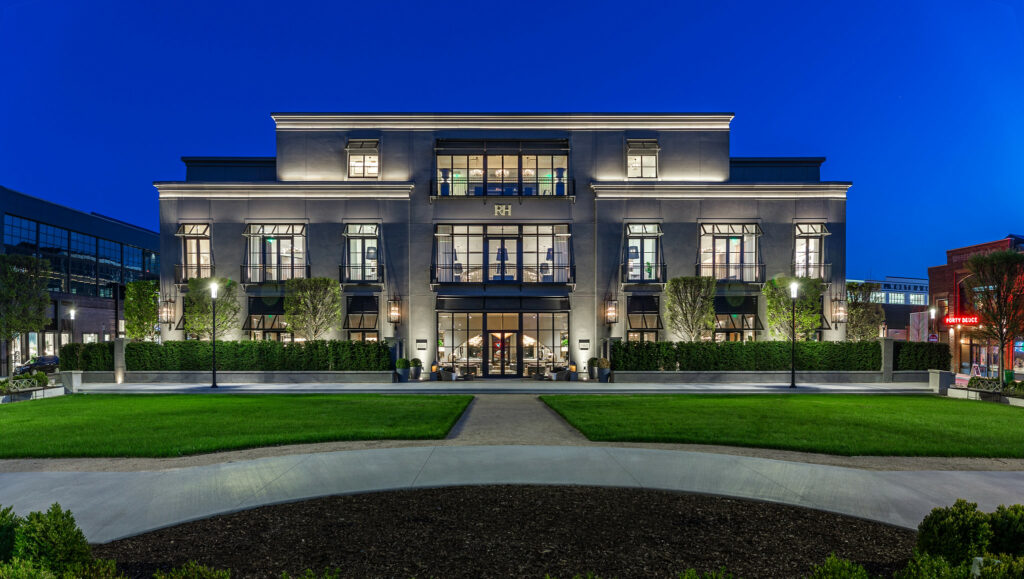By Steiner + Associates | Published in International Council of Shopping Center
When it comes to understanding the details behind many retail shopping centers, the source of record is often the original architects who designed and planned every square inch of space. Such is the case with one of the first open-air lifestyle centers in the country: Easton Town Center. This 1.7 million-square-foot, 240-store center with anchors Macy’s and Nordstrom was an early model of the modern lifestyle center — designed to resemble a small town — when it opened in Columbus, Ohio, in 1999.
Lori Bongiorno has been intimately involved with Easton Town Center from the beginning. In fact, her daughter was born just two days after the center’s grand opening in June 1999. Bongiorno is the principal director of the commercial studio of M&A Architects, which is based in Columbus and Cincinnati and which was the Easton Town Center lead architecture firm from the project’s conception in 1997. The development has been in a near perpetual state of evolution ever since, with its second phase following only two years after the grand opening.
The developers announced plans last year to build an urban district that would contain residential and hotel uses and link the center’s original two retail components. Bongiorno describes this as the most groundbreaking and distinctive phase of the project’s nearly 20-year life span. Easton Town Center was originally conceived as a mixed-use community with multiple uses, but only now are things finally starting to reach fruition, she says. “For the first phase, no one had done anything like it before, so they were nervous about how much office would be viable to mix in there, and they were nervous about residential,” said Bongiorno. “Having that residential incorporated into the town center makes it that much more of a real town, and you have a captive audience living there. People want to live there — it’s fun.”
The excitement Bongiorno describes is almost tangible, and others share it. “The urban district is a natural extension to Easton Town Center that has a very metropolitan look and feel, with a unique collection of new and exciting tenants,” said Anne Mastin, executive vice president of retail real estate for Steiner & Associates, which co-developed the center with L Brands (formerly Limited Brands) and The Georgetown Co. “We are sensitive to keeping our current customers engaged and eager for what’s to come, while also building and revving up our retail and entertainment options for the next generation of shoppers.”
Just now M&A is working on plans for an office building, a parking garage and a hotel. “We do a lot of studies that never happen, so there is always something brewing, some idea that [CEO Yaromir Steiner] has to make better,” said Bongiorno. “He is always trying to improve Easton and make it better and keep it evolving so it is fresh. And it is a really fun project to work on, because we are always getting to study some crazy things.”
A constant focus on forward thinking keeps the work on Easton Town Center interesting, Bongiorno says. “One of our main tenets at Easton is maximum flexibility in order to anticipate the unknown,” she said. “We never want to box ourselves into a corner for future growth and densification, so we get very creative.”
M&A employs a six-member team for the Easton Town Center project alone, including a dedicated code specialist who works with the city to ensure adherence to building codes. “The uses other than the retail have to be implemented in a way that they have their own identity and an intuitive way to access them, but they can’t negatively impact the retail, because the retail is number one,” said Bongiorno. “There are just different considerations, but the number-one goal is to maintain that retail frontage that is visible and has the mass of other retailers around it for foot traffic and cross-shopping.”
In many ways Easton Town Center helped set the tone for many of the open-air retail and mixed-use developments that have followed, observes Bongiorno. “Retailers are more open to the concept now, and they understand it better,” she said. “At Easton, it used to take a lot of work to get them to do something over the top with their branding, and now they get that as well and are a little easier to work with.”
Entertainment, too, has been a consistent focus at Easton Town Center. A 30,000-square-foot Legoland Discovery Center now under construction is a case in point. “That is going to be a huge draw in keeping the entertainment uses strong, and that is something Easton has always done so well.”
Perhaps adaptability is the key lesson to draw from Easton Town Center’s evolutionary journey. “What Easton does so successfully is [to] continually evolve, and there is always a reason to go there,” said Bongiorno. “It is still my favorite place to go shopping, and 20 years later I am never sick of it. I don’t remember a time [here] when change wasn’t a constant.”






